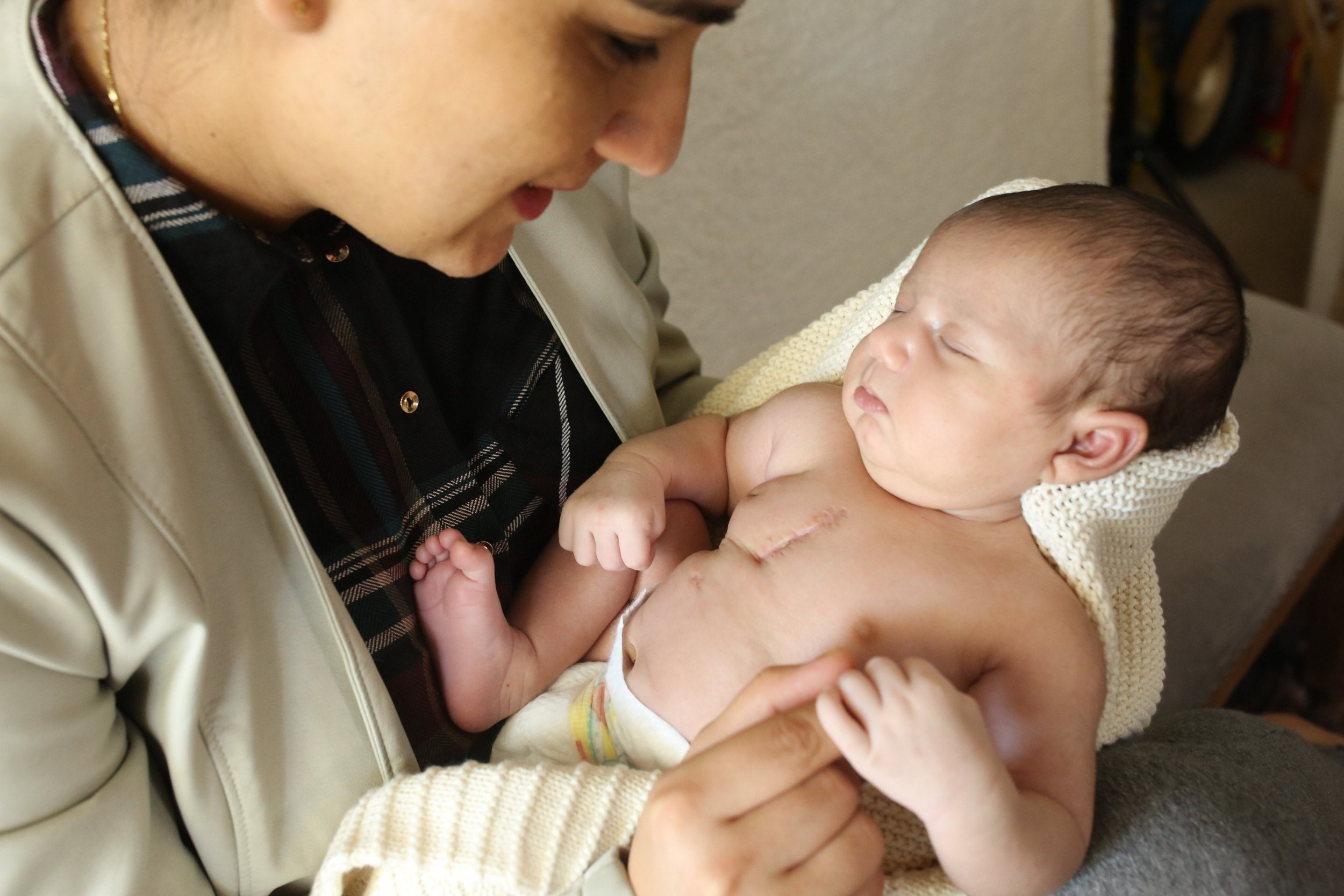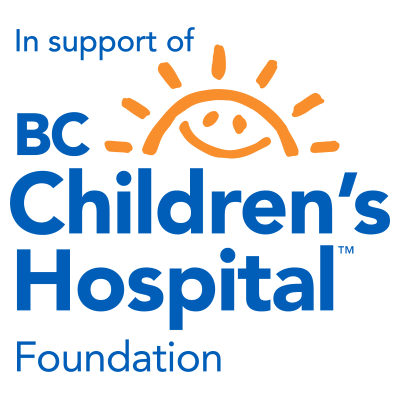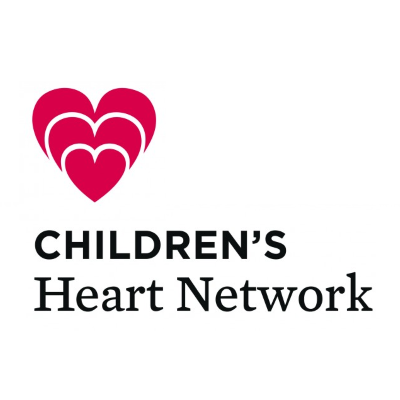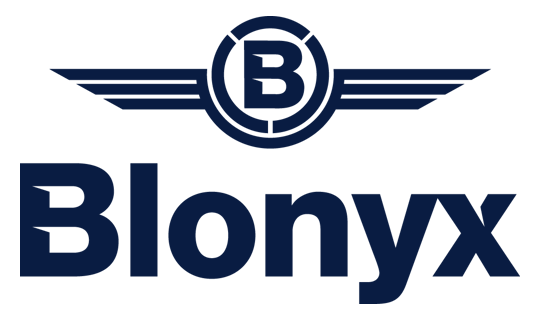A Family's Story






Kai’s Story
Whether it’s playing soccer or horseback riding near his home in Nanoose Bay, 10-year-old Kai loves to get outside and get moving. Like many kids with congenital heart disease, there are some things he has to stay away from—like hockey—but that’s never stopped him from having fun in whatever way he can.
He’s come a long way since he was a baby. At just six months old, Kai was rushed to BC Children’s Hospital in profound heart failure. An echocardiogram revealed he had a severely malformed mitral valve, and cardiac experts had to work quickly to implant a mechanical valve that would save his life.
It was weeks before Kai was able to return home, and like many heart patients with severe cases, the road ahead wasn’t an easy one.
Over the years, Kai and his family have worked hard to adjust to their new normal—daily medications, safety precautions—while striving to give Kai the childhood he deserves. And throughout it all, they’ve had a world-class cardiac team by their side.
“For families like us, we’re in it every day,” said Kai’s mom, Sandy. “Our calendars are full. We don’t miss a dose of medication. Knowing there are donors out there—it’s like they’re in it with us.”
These days, Kai is able to receive most of his heart care close to home. This is thanks to his BC Children’s cardiologist, Dr. Brian Sinclair, who provides care to kids across Vancouver Island and works closely with BC Children’s teams in Vancouver.
Of course, Kai still needs to travel to BC Children’s Hospital for special appointments and procedures. And this year, Kai is getting ready for the next big step in his heart journey: a surgery to replace his current mechanical valve with a larger model.
As Kai prepares himself for the road ahead, there’s one thing he plans to continue doing: helping others. For years now, Kai has mentored other kids with heart conditions, helping them feel more at ease with intimidating procedures. When asked about what drew him to mentorship, Kai said, “When I mentor other kids, I get to see them be brave and get their test done. I get to see them feel better.”
It's easy to see that Kai is an amazing kid who, step by step, is creating positive change for those around him. We all have that power within us
Source: BC Children’s Hospital Foundation
July 2025 update:
Kai is one of the 2025 Triple Crown for Heart’s top fundraisers!
Watch a reel on his fundraising efforts on the BC Children’s Hospital Facebook page.
Make a donation to Kai’s fundraiser campaign here.
__________________________________________________
Cohen and Nash’s Story
“There’s something wrong with your baby’s heart.” The dreaded words that no parents want to hear after the birth of their child. From Kamloops, baby Cohen was airlifted to BC Children’s Hospital. What followed was a heart journey that would not only define the family's experience throughout Cohen's early years but continue with the birth of their youngest little boy, Nash.
The day after Cohen was born, his parents Angela and Emery were spending time bonding with their beautiful little boy. After a routine check, their midwife noticed that Cohen was working unusually hard during nursing and his oxygen saturation was off, so Cohen was examined at their local hospital in Kamloops. They discovered Cohen had significant heart issues. Cohen and Angela were immediately airlifted to BC Children’s Hospital and whisked away to the pediatric intensive care unit. Tests revealed that two of the arteries in Cohen's heart were switched - a critical congenital heart defect. The tiny newborn was fighting hard to survive, but with his oxygen saturation dropping each day it became harder for him to breathe and he started to turn blue.
He underwent a four-and-a-half-hour surgery, and to Angela’s and Emery’s relief the medical team told them the surgery was a success. Two weeks later they were able to return home to Kamloops.
Pregnant with their next child, Nash, Angela felt signs that something wasn’t quite right. Ultrasounds confirmed that she needed specialized clinical care, and eventually Angela was diagnosed with polyhydramnios, an excessive buildup of amniotic fluid. Nash was born with a condition called VACTERL association, which included birth defects that affected his heart, kidneys, spine and other parts of his body. The newborn stayed in the neonatal intensive care unit for the next 10 weeks and underwent three major surgeries, as well as numerous other procedures.
At the Heart of it All
At only 15 months old, Nash had open heart surgery to repair a hole in his heart. The surgery went well, and the family was able to come home a couple of weeks later. When you look at photos of Cohen and Nash today, you wouldn’t know what they had been through in their first moments of life. Nash is a vibrant 4-year-old who is full of life and smiles, and Cohen is a smart, charismatic and energetic 7-year-old. Both boys love to wrestle and play sports with their older brother, Quinn. Cohen’s and Nash’s heart journeys will be life-long, and they will be supported by cardiology specialists at BC Children’s for years to come.
“Without BC Children’s Hospital and their expert care,
we would not have two of our beautiful boys with us here today.”
- Angela, Cohen & Nash’s mom
Source: BC Children’s Hospital Foundation __________________________________________________
Harmehar’s Story
In 2018, Amanjot and her husband Kamaljit were expecting a normal birth for their first child, Harmehar, at their local hospital in Surrey, BC. But when their little girl emerged into the world she didn’t cry or open her eyes, providing a small hint of the momentous events to come over the next 72 hours.
Amanjot could see that Harmehar’s nostrils were flaring as she struggled to breathe and the baby wasn’t feeding properly. At 24 hours after her birth Harmehar went through a routine test and it was determined that something was wrong with the newborn’s heart, although the exact diagnosis was still unclear. They rushed her to the neonatal intensive care unit and quickly put her on a ventilator.
Once the team was able to stabilize her, Harmehar was diagnosed with a severe form of tetralogy of Fallot, a rare condition composed of multiple heart defects that drastically reduce the amount of oxygen in the blood. The baby was taken to BC Children’s Hospital and Amanjot was transferred to the adjoining BC Women’s Hospital as she recovered from the C-section delivery.
It was all a whirlwind of emotions for Amanjot. “I was telling my husband I would be okay,” she recalled. “But I didn’t know if Harmehar would survive. For two days, I didn’t know if I should even pray for her to survive, because I didn’t know what her life would be like.”
Harmehar went into surgery when she was 3 days old and the procedure went well. More surgeries followed later on, and Amanjot was grateful for the incredible care her family received from the medical teams. Nurses checked in with Amanjot every week to make sure the baby was okay, and they even responded when Amanjot called with questions in the middle of the night, concerned about Harmehar’s wellbeing.
Harmehar is now four years old, and she’s developed into an active, social child. She’s interested in dance and skating, and has inherited Kamaljit’s love of the Vancouver Canucks. Harmehar even has her own child-sized hockey stick and plays hockey in the living room with her father.
When Amanjot thought back to the first tumultuous year of her daughter’s life, she reflected on how some of the little things made such a big difference. She was grateful for how the teams at BC Children’s made small, yet powerful gestures to support the entire family.
“After a big surgery when Harmehar was 11 months old, a nurse asked how she was doing,” Amanjot said. “Then she asked me how I was doing, and I just cried. Even I hadn’t asked myself that, but when your baby is suffering, the parents suffer too, right? It was a big thing for me that she asked—it was everything.”
Source: BC Children’s Hospital Foundation __________________________________________________
Airie and Amos Vivancos
During a family vacation in Mexico, Amos, his four-year-old daughter Airie, and the rest of their family were playing in the hotel swimming pool. Suddenly Amos’s wife started screaming—Airie was submerged in the water, not moving. Amos leaped into the pool and pulled her out, then performed CPR and managed to resuscitate the little girl.
This traumatic incident wasn’t the first time Airie had passed out unexpectedly—she had experienced a similar situation a year earlier when she fell unconscious while going down a slide at a playground. At the time doctors hadn’t been able to determine the cause.
After the family returned home from their vacation, they took Airie to the doctor, who referred them to specialists and, eventually, they visited the cardiology department at BC Children’s Hospital. After a week, the test results came back: Airie had Long QT Syndrome (LQTS), a heart condition that could be passed through family genetics. The entire family was tested, and it was revealed that Amos and his son Kian also had this condition, as well Amos’s mother and one of his sisters.
This news was the missing piece of a 30-year puzzle that had eluded Amos for most of his life. Ever since he was a child, he had suffered from a mysterious ailment that caused him to pass out while he was engaged in intense physical activities. They were never able to identify why this happened, and so he had simply learned to live with it, refraining from participating in many forms of physical activity. “It was a relief to finally know the cause,” Amos said.
Airie, Amos and Kian were prescribed medications to help control the LQTS and they visit BC Children’s Hospital regularly for checkups. Thanks to the help they received at the hospital, the entire family is now able to move on and enjoy their lives without limiting the children’s potential.
“It’s a relief to know what we have,” Amos said, “to know what the effects of the medication are, to know we can live a normal life.”
Source: BC Children’s Hospital Foundation __________________________________________________
Ayla Ramogida
When Ayla started experiencing concerning symptoms, like difficulty breathing and poor weight gain, her parents Karena and Roberto didn’t expect it to be due to a complex heart condition. But after visiting their local emergency department in New Westminster, they were rushed to BC Children’s Hospital—where their lives changed in an instant.
Within an hour of arriving, Karena and Roberto learned that their 1-month-old daughter had multiple heart conditions—atrial septal defect (ASD), ventricular septal defect (VSD), and patent ductus arteriosus (PDA). The conditions were referred to as ‘holes’ in Ayla’s heart.
Since these holes sometimes close on their own in children, Ayla was closely monitored by her cardiac care team including her surgeon, Dr. Sanjiv Gandhi. However, when she was 3 months old, Ayla’s health rapidly declined and it was clear that open-heart surgery was necessary.
Dr. Gandhi performed an operation to repair the holes in Ayla’s heart. During the procedure, he was only able to locate and close the PDA. Because Ayla was so small and fragile it was deemed too risky to find the other holes during the procedure. Still, Ayla’s health improved greatly after the surgery. “She was so happy and more playful than we had ever seen her,” Karena remembered.
But as time went on, Ayla began to have difficulty eating and stopped gaining weight. The family made frequent trips to BC Children’s, where health care providers worked tirelessly to determine whether the ASD or VSD was continuing to contribute to her health problems. Experts knew that there was one way that they could gain a deeper understanding of Ayla’s heart: through the power of 3D technology.
Using images from a CT scan of Ayla’s heart, engineers at the BC Children’s Digital Lab performed advanced image processing techniques to create a virtual three-dimensional replica of her anatomy. A physical 3D model was also rapidly printed to allow the surgeon to hold and study her heart in extraordinary detail. The entire process was completed in less than 48 hours after imaging, right in time for preoperative planning discussions so Ayla’s care team could evaluate treatment options.
The rapid timing of advanced image processing and in-house 3D printing —which previously needed to be done elsewhere and could take months to complete—turned out to be critical. Three days before Ayla’s surgery, she began to experience difficulty breathing at night. It became so severe that she was on a ventilator for four days, while a team of cardiologists worked to save her life.
“It felt like time was at a standstill,” Karena said. “There was nothing we could do to help our daughter or make her better.”
Fortunately, doctors were able to stabilize her health. The day before her surgery, Dr. Gandhi used the 3D printed model to perform a simulated surgery, which enabled him to strategize a new plan that would allow him to close both the VSD and ASD during the procedure.
“After the procedure, Dr. Gandhi told us that Ayla did great during surgery and both her ASD and VSD were closed,” Karena said. “It was such a relief to hear those words and to know that her journey was finally taking a turn for the better.”
Ayla returned home just days later. Today, the family continues to visit BC Children’s Hospital for routine follow-up care. Now 10-months-old, Ayla is off all medications and full of energy.
“We are so grateful that Ayla had access to this state-of-the-art technology so the team could go into surgery knowing exactly what to do,” Karena said. “It helped save our daughter’s life.”
Source: BC Children’s Hospital Foundation __________________________________________________
Samantha armstrong
Samantha Armstrong
On the day she was born, Samantha Armstrong suffered unexpected respiratory distress. Doctors found she had a rare congenital heart defect called Ebstein’s Anomaly, where her right ventricle does not not pump efficiently to her lungs. Sam was initially scheduled to have surgery shortly after her diagnosis.
Six days later, however, the family was told that Samantha’s heart had stabilized and she didn’t need surgery right away. Parents Deborah and Richard were finally able to take their first child her home.
After nine years, and countless check-ups at BC Children’s Hospital, Samantha was starting to slow down. “She couldn’t climb the stairs or run,” recalls Deborah.
In May 2008, Samantha had open-heart surgery on the defect she had been living with for so long. “One of the things she was afraid of was the pain,” says Deborah. “The nurses made her feel much more comfortable.”
Sam’s family and community were a big support to her as well. As the family prepared to leave home in the early morning hours to travel to Children’s Hospital, they saw that the side walk was covered in chalk drawings that spelled out “Sammy We Love You”. Family friends had stayed up late to leave her this hopeful message. As the Armstrong’s arrived to the hospital lobby, more than 30 family members, from near and far, were waiting for the family to wish Sam well.
Sam’s surgery and recovery was a success, and she was eventually able to get back to her regular physical activity.
Sam’s experience took a more unexpected turn two years after the procedure, when she developed Post-Traumatic Stress Disorder. Counsellors gave her techniques to deal with her distress, and she eventually overcame it. “Now she wants to study medicine,” says Deborah. “She would like to pursue either cardiology or psychiatry.”
Sam now looks back positively on her experience. Deborah says that Sam is “now okay with talking about her surgery; and she wants to share her experience to help others.”
Now 17, Samantha will continue to be followed by BC Children’s Hospital until she is 18. She’s already prepared for her transition into adult care, and her mom is confident Sam is ready to take it on.
Source: BC Children’s Hospital Foundation __________________________________________________
source: www.bcchf.ca
Andrew Westerlund
“A Second Chance- Boy with a Heart Transplant”
Andrew Westerlund was a healthy and active boy who loved playing soccer, hiking and being outside. Then suddenly on December 21, 2012, he started to complain about pains in his stomach. Thinking that it might be his appendix Andrew’s mom Shannon took him to their local hospital but they were quickly transferred to BC Children’s Hospital. After going through some tests Andrew was sent home with medication and scheduled to return in a few days to see a specialist at the Children’s Heart Centre.
When the time came for his appointment Andrew could barely walk into the Heart Centre. He was immediately transferred to the Pediatric Intensive Care Unit, where the family learned that Andrew had an enlarged heart and his organs were starting to shut down due to improper blood flow. The Westerlunds were also told that Andrew needed to have a heart transplant and that it could take up to four months to find a heart that was a perfect match.
In the meantime Andrew had open-heart surgery on January 16, 2013, and became the first patient at BC Children’s Hospital to have a Berlin heart. A Berlin heart is an artificial heart about the size of a small refrigerator that pumps blood for the patient while they wait for a transplant. Luckily, just five days after Andrew was hooked up to the Berlin heart, the Westerlunds were informed that a heart had arrived for Andrew. He immediately went back into surgery and received his new heart on January 21, 2013.
Since then Andrew has made a remarkable recovery. He returned home just 15 days after his surgery, was skiing eight and half weeks later, and returned to school only 10 weeks after surgery.
Andrew’s diagnosis may have also saved his older sister Catherine from a similar incident. After Andrew’s surgeries the family went to get tested for his genetic condition and learned that Catherine has a hole in her heart that will also require surgery to repair.
Source: BC Children’s Hospital Foundation - Miracle Stories
__________________________________________________






































